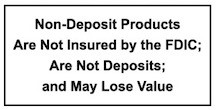Impulse buying can wreak havoc on your finances and prevent you from reaching your financial goals. It’s easy to get caught up in the excitement of making a purchase without fully considering the consequences. However, breaking bad spending habits is essential for taking control of your finances and establishing healthy financial habits. In this article, we will explore effective strategies to curb impulse buying and regain control over your spending.
- Recognize Your Triggers
The first step in curbing impulse buying is to identify your triggers. Reflect on your past purchasing patterns and determine the situations, emotions, or circumstances that lead you to make impulsive purchases. It could be stress, boredom, social pressure, or even certain environments such as malls or online shopping websites. By understanding your triggers, you can proactively address them and find alternative ways to cope without resorting to unnecessary spending. - Practice Mindful Spending
Practicing mindful spending involves being fully aware and intentional with your purchases. Before making a purchase, pause and ask yourself if it aligns with your needs and financial goals. Consider whether it’s a necessity or simply a fleeting desire. Take the time to evaluate the value and utility of the item you’re considering buying. Mindful spending allows you to make conscious decisions and avoid impulsive purchases that you may later regret. - Implement a Waiting Period
Impulse buying often occurs in the heat of the moment. One effective strategy to break this habit is to implement a waiting period before making any non-essential purchase. Give yourself at least 24 hours or even a week to think it over. This waiting period allows you to step back, evaluate the purchase more objectively, and determine if it’s something you genuinely need or simply a passing impulse. Oftentimes, you’ll find that the desire to buy diminishes after the waiting period. - Create a Budget and Stick to It
A well-planned budget is a powerful tool for curbing impulse buying. Set clear financial goals and allocate specific amounts for necessary expenses, savings, and discretionary spending. By giving yourself a predetermined spending limit, you can make more informed decisions about what you can afford and what truly adds value to your life. Regularly review your budget to track your spending and ensure you’re staying on track. - Use Cash or Debit Cards
Using cash or debit cards instead of credit cards can help you curb impulse buying. With cash or a debit card, you’re limited to spending only the money you have available. Leave your credit cards at home or in a secure place to avoid the temptation of accumulating debt. Seeing the physical money leave your wallet can also provide a tangible reminder of the actual cost of your purchases, making you more conscious of your spending decisions. - Remove Temptations
Minimize exposure to tempting situations by removing triggers from your environment. Unsubscribe from retailer email lists, unfollow social media accounts that promote excessive shopping, and avoid visiting stores or browsing online shopping websites without a specific purpose. By reducing exposure to temptations, you can avoid unnecessary temptations and significantly decrease the likelihood of impulse buying. - Find Healthy Alternatives
Identify healthier alternatives to cope with emotions or boredom that typically lead to impulsive purchases. Engage in activities like exercising, reading, pursuing hobbies, or spending time with loved ones. Explore cost-effective ways to enjoy leisure activities, such as visiting parks, having a picnic, or utilizing free community resources. Finding healthier alternatives not only distracts you from impulsive buying but also improves your overall well-being. - Practice the 30-Day Rule
For non-essential purchases, implement the 30-day rule. When you find something you want to buy, write it down on a list and wait for 30 days before revisiting the idea of purchasing it. During this time, evaluate whether the item is a true necessity or if the desire has subsided. Often, you’ll find that the initial impulse fades, and you can make a more rational decision about whether to proceed with the purchase. - Seek Accountability
Enlist the support of a friend or family member who can hold you accountable for your spending habits. Share your financial goals and the challenges you face in curbing impulse buying. Having someone to discuss your decisions with can provide a different perspective and help you stay on track. You can also consider joining support groups or online communities focused on financial accountability and frugal living for additional encouragement. - Celebrate Small Victories
Breaking bad spending habits takes time and effort. Celebrate your small victories along the way to stay motivated. Reward yourself when you successfully resist an impulse buy or reach a financial milestone. However, choose rewards that don’t involve spending money. Treat yourself to a movie night at home, a relaxing bath, or quality time doing something you love. Recognize that every step towards curbing impulse buying is a step towards financial freedom and stability.
In conclusion, breaking bad spending habits and curbing impulse buying is essential for taking control of your finances. By recognizing your triggers, practicing mindful spending, implementing a waiting period, creating a budget, using cash or debit cards, removing temptations, finding healthy alternatives, practicing the 30-day rule, seeking accountability, and celebrating small victories, you can regain control over your spending and work towards achieving your financial goals. Remember, it’s a journey that requires patience and perseverance, but the rewards of financial stability and peace of mind are well worth the effort.


